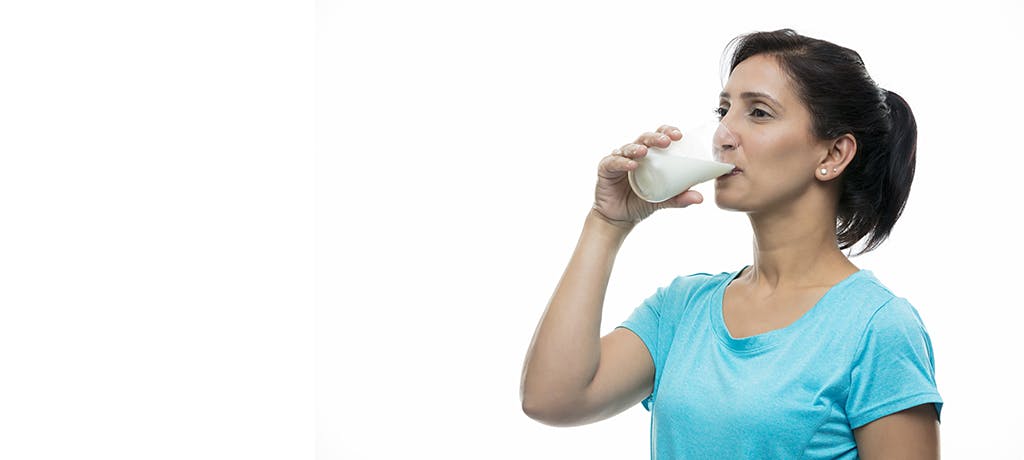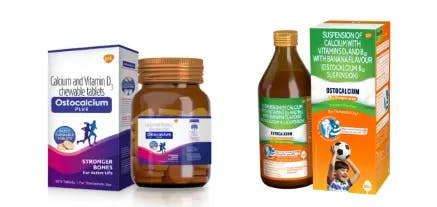Age and bones have a unique love-hate relationship. When we are young, our bones are in top shape. But as we start aging, bone health starts getting affected1. This article will help you understand how age affects bones.
Some interesting bone facts
here are some interesting bone facts you need to know:
Fact 1: Bones at birth and in the new-born babies are soft and flexible
Children have bones which are made of soft and flexible material called cartilage (car-till-ij). This helps in the child growing and attaining their adult height. After which, this cartilage is slowly deposited with Calcium and hardens to form strong bones as we know
Fact 2: Childhood (1 – 9 years): A crucial time as skeleton grows in size and density
During childhood, our bones grow in size and density because Calcium and other minerals are being deposited in the bone. Young children who are not getting their Calcium and Vitamin D3 might have bone weakness, bent legs and other issues.
Fact 3: Adolescence (10 – 20 years): A time for growth spurt. Bones developed during this time, lasts for a lifetime.
Puberty is an important time for bone growth. Girls grow in height between 11-12 years and boys experience this at 13-14 years1 . Almost 90% of bone strength is achieved during adolescence, something which determines the future bone health
Fact 4: Adulthood (20 – 30 years): Another chance to ensure good bone density
By this age, body is no longer forming new bone as easily but the final peak bone mass and strength is reached in the late twenties. Women also experience pregnancy and lactation during these years. A good diet is important to meet high demands of Calcium during pregnancy and lactation.
Fact 5: Middle age (30 – 50 years): When age starts taking a gradual and slow toll on the bone health
Starting at 30 years, there is a steady reduction in the bone strength and even muscle tone both in men and women4 . All though our life, bones are replaced. However, after 40 years of age, less bone is replaced. Hence Calcium and Vitamin D3 in the diet is important not only to ensure strong bones after remodeling but also to prevent bone loss.
Fact 6: After 50 years: Bones start thinning and losing minerals
Women experience menopause between 42 – 55 years which speeds up bone loss in them1 . Bones start losing minerals and change in structure5 . There is increased risk of fracture1 . Osteoporosis, a disease condition where bones can break easily due to depleting bone mineral density, is common. Small activities like bending or sneezing can also cause fractures in a person with osteoporosis.
Fact 7: Bone health after 70: Bones are very weak and fractures are common.
Fall prevention becomes important. After the age of 70 years, bone strength is at the minimum. Falling down is a common cause of bone injury in elders and hence fall prevention becomes important 1 . A moderate exercise regime might help maintain strength, balance, and flexibility
In conclusion, eating a balanced diet with plenty of Calcium and Vitamin D3 , especially as people age is important. Optimizing peak bone mass and having bone healthy lifestyle behavior in youth can be an important strategy to minimize the risk of osteoporosis as adults. It is also important to mention the beneficial effect of exercise for bones. Exercise can help slow the rate of bone loss, improve balance and coordination, strengthen muscles among others. Older people can also exercise in water to maintain bone mass and prevent loss.
References
1. American Academy of Orthopedic Surgeons. Healthy Bones at Every Age. Available from: https:/orthoinfo.aaos.org/en/staying-healthy/ healthy-bones-at-every-age/. Accessed on: 15 July 2020 2. Huelke DF. An Overview of Anatomical Considerations of Infants and Children in the Adult World of Automobile Safety Design. Annu Proc Assoc Adv Automot Med. 1998;42:93-113.
3. National institute of arthritis and musculoskeletal and skin diseases. Kids and Their Bones: A Guide for Parents. Available from: https:/ www.bones.nih.gov/health-info/bone/bone-health/juvenile. Accessed on: 06 July 2020
4. Mount Sinai. Aging changes in the bones - muscles – joints. Available from: https:/www.mountsinai.org/health-library/special-topic/ aging-changes-in-the-bones-muscles-joints. Accessed on: 07 July 2020
5. Victoria state government. Ageing - muscles bones and joints. Available from: https:/www.betterhealth.vic.gov.au/health/ conditionsandtreatments/ageing-muscles-bones-and-joints. Accessed on: 06 July 2020




